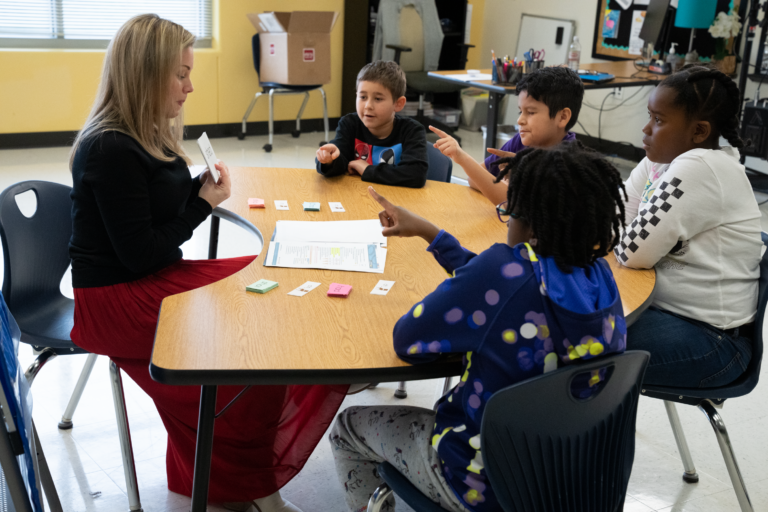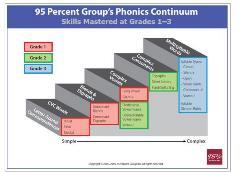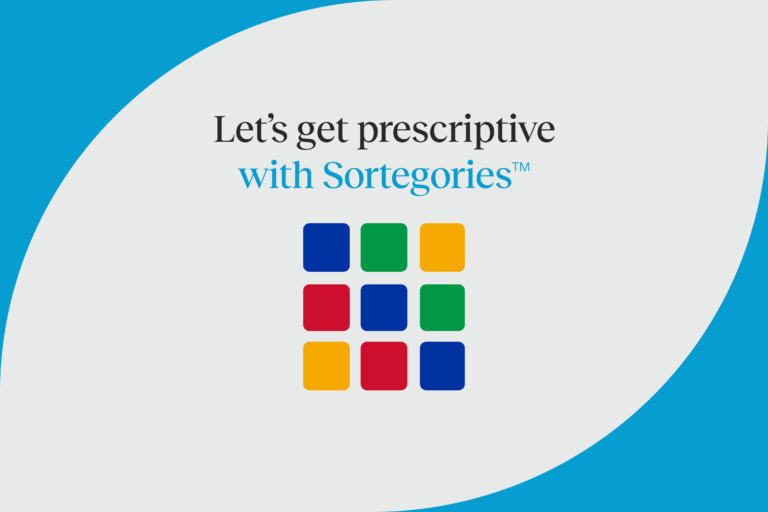Multisyllabic word decoding routines

Have you heard of the “third grade stumble?” While it’s not guaranteed that kids will experience difficulty with reading exactly at third grade, many teachers report that they have students who have reached grade 2 and above who struggle to read multi syllable words.
Decoding multisyllabic words is a common challenge for teachers.
Students in these upper elementary grades are beyond wanting to go back to words like rat, cat, and sat. Teachers need a way to accelerate their acquisition of the skills needed to read multi syllable words. Many 3rd–5th grade teachers want to focus on teaching students how to interpret text and don’t feel prepared to teach decoding at the syllable level. That’s why we created a set of routine that enable teachers to efficiently work with students in ways that are much more engaging than phonics worksheets.
Teaching students to recognize multi syllable types is a way to help accelerate their application of decoding strategies to read unknown words. This involves the students’ ability to pinpoint the vowel(s) in a word and the surrounding consonants. Using explicit instructional routines and activities in place of worksheets for decoding multisyllabic words, provides immediate skill feedback for each student as they move towards mastery.
Using a phonics continuum: skills mastered at grades 1-3
95 Percent Group’s Phonics Continuum shows a typical progression of the phonics concepts taught by grade. Students generally master all the skills shown in pink in grade 1, which focuses on short vowels and long vowel silent-e in one-syllable words.
Core instruction generally emphasizes the more complex vowel patterns in grade 2, including vowel teams and r-controlled vowels. Then, grade 3 is all about ensuring that students can read multi syllable words fluently. Although they are exposed to plenty of multi syllable words in grade 1 and 2 text, most state standards expect students to be efficiently reading multisyllabic words at least by the end of grade 3.

Demystifying multisyllable words can be accomplished with explicit instruction and student engagement—instead of worksheets
Our 95 Multisyllable Routine Cards™ (MSRC) program provides teachers with everything they need to fast track students to read multi syllable words including techniques for teaching the six syllable type, syllable division rules and how to incorporate multisyllabic lessons into core instruction.
Each of the 6 syllables is taught in 3-week cycles for a total of 18 weeks. And the best part is that this is done in 5 minutes a day as a whole class supplement to the core curriculum.
I do, we do, you do
All MSRC lesson plan routines include the “I Do, We Do, You Do” model leading up to activities designed to show skill mastery:
- Week 1 focuses on learning to recognize the syllable type
- Week 2 is about using the syllable type to pronounce the vowel sound correctly. Only 1-syllable words are used for Weeks 1 & 2.
- In week 3, two-syllable words are used and students learn how to find where to divide the syllables and how to read the multi syllable word easily.
There are a few prerequisite skills students need before beginning multi syllable word instruction.
First, students need to show accuracy and fluency in sound segmentation and blending. They must also demonstrate sound-symbol correspondence mastery.
Take a look at how our 95 Multi syllable Routine Cards™ (MSRC) offer teacher and student-friendly routines on six syllable types. This resource is designed to teach students how to find patterns, divide syllables, and read multi syllable words.
Decoding multi syllabic words is an essential skill that has a direct impact on reading accuracy, fluency, and the comprehension of text.
Watch this video segment to learn more about how MSRC helps students solve the mystery of multisyllabic words by recognizing patterns, identifying correct vowel sounds, and applying syllable division rules. The routines are ideal for whole-class instruction in as little as 5 minutes a day, or to use as part of a small-group intervention lesson.



